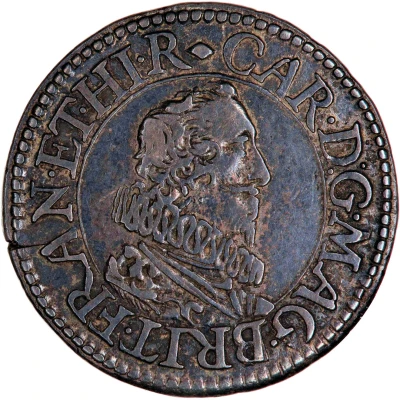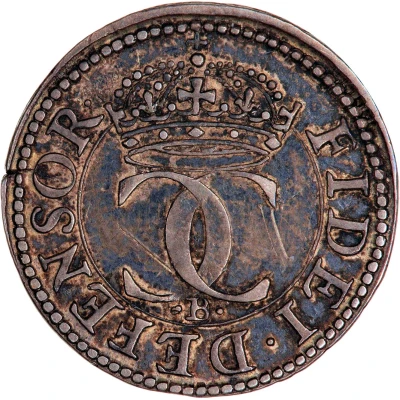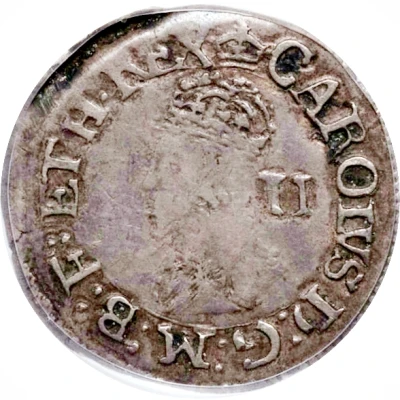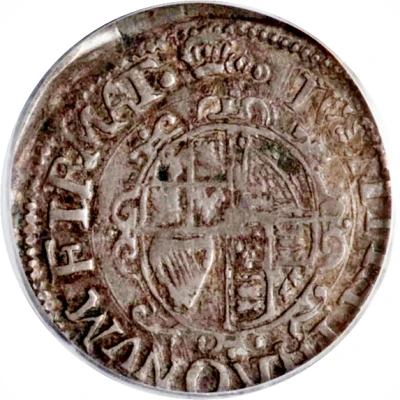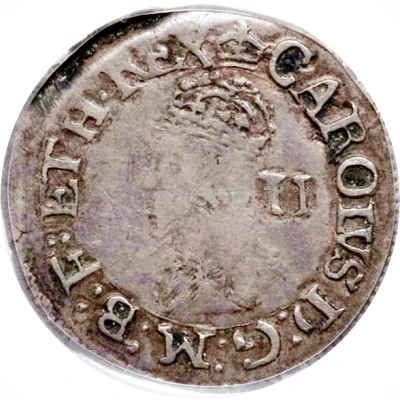
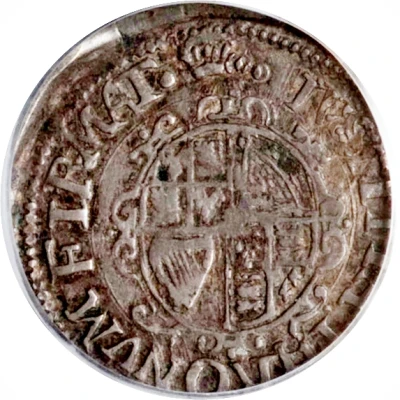

© Heritage Auctions
½ Groat - Charles I Tower mint; Group D ND
| Silver | 0.71 g | 15 mm |
| Issuer | England (United Kingdom, British Overseas Territories and Crown Dependencies) |
|---|---|
| King | Charles I (1625-1649) |
| Type | Standard circulation coin |
| Years | 1632-1648 |
| Value | ½ Groat (1⁄120) |
| Currency | Pound sterling (1158-1970) |
| Composition | Silver |
| Weight | 0.71 g |
| Diameter | 15 mm |
| Shape | Round |
| Demonetized | Yes |
| Updated | 2024-10-08 |
| Numista | N#44830 |
|---|---|
| Rarity index | 66% |
Reverse
Oval quartered shield of arms dividing C R, legend around.
Script: Latin
Lettering:
IVSTITIA THRONVM FIRMAT
C R
Translation: Justice consolidates the throne
Comment
House of Stuart (1603-49), Charles I (1625-49), Tower mint under the King (1625-42) and under Parliament (1642-49).Charles I was removed from the throne in 1642 but this series was struck until 1648, under Parliament.
Mintmark at top of both sides (see notes at date lines below). Die varieties as follows:
Sp#2828 Bust type 3.1, no inner circles, C R either side of oval shield;
Sp#2829 Bust type 3.2-4, inner circle on one or both sides, C R on either side of oval shield;
Sp#2830 Bust type 3.5-6, no inner circle or obverse only, oval shield, no C R;
Sp#2831 Bust type 3a1, no inner circles, rounder shield, no C R;
Sp#2832 Bust type 3a2-3, inner circles on obverse or both sides, rounder shield, no C R;
Sp#2833 Bust type 3a3, inner circles on both sides, rounder shield, no C R;
Interesting fact
One interesting fact about the ½ Groat - Charles I (Tower mint; Group D) ND (1632-1648) coin is that it was minted during a time of great turmoil in England. Charles I was facing opposition from Parliament and the coinage was used as a tool for political propaganda. The coin features a portrait of the king and the inscription "CHAROLVS I D G ANGLIAE" which translates to "Charles I, by the grace of God, King of England". This coin was minted at the Tower of London, which was a strategic location for the production of coins, as it was a secure and controlled environment. Despite the turmoil, the coin remained in circulation until 1648, when the Commonwealth of England was established and a new coinage system was introduced.
